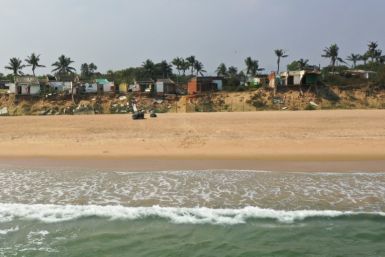Australian Energy Market Operator denies claims Victoria power supply was at risk during NSW heatwave

The Australian Energy Market Operator (AEMO) has dismissed claims that power supply in Victoria was at risk during the extreme heatwave that struck New South Wales this month. The state’s energy network was overloaded to its extreme as temperatures reached record-breaking levels.
On Feb. 10, severe conditions caused the energy demand at 4:30 p.m. to soar as high as 14,181 MW. According to reports, AEMO had approached the Victorian government to notify that some parts of the state could suffer power losses to meet the energy demand of NSW. Residents in western Victoria were warned about blackouts to ensure transmission lines between the two states would function at full capacity.
Weather forecasts produced for AEMO on the morning of the blackouts predicted mercury levels to reach high 30s in Adelaide. However, the Bureau of Meteorology had forecast temperatures to reach as high as 41 degrees two days earlier.
According to Climate Council member and former energy company executive Andrew Stock, AEMO would have been able to prevent a massive blackout had it taken BoM’s forecasts into consideration. He added that the operator, based on the forecasts from the bureau, could have taken steps to make certain that the Pelican Point power station was available to be used. “If they’d been using the bureau data where it was saying it was going to be 40 or 41 three days in advance, they would have known that demand would be high and therefore could have taken steps to ensure that enough supply was available,’’ he said.
Stock calculated there was about 3,000 MW loss of power from fossil-fuel plants on the day of the blackouts. “A lot has been made politically of how unreliable renewables are, yet when it came to the crunch on the 10th of February, renewables actually performed as expected – it was the fossil fuel plant that failed dismally,” Stock said, speaking with the Guardian.
Meanwhile, AEMO spokesman Stuart Allott said the operator did not ask “any operators to shed load in Victoria” at any point in time. There was no discussion concerning limiting power supply in Victoria, Allott added.
AEMO uses data from Weatherzone and Telvent. But this was met with criticism from SA Energy Minister Tom Koutsantonis. On Tuesday, he targeted the operator’s use of privately-produced weather information. “The fact that the national operator of our electricity network, which is one of the biggest and most complex machines in the world, was using the Weatherzone website for its weather forecasting and not the BoM beggars belief,’’ he said.
In the midst of a debate on whether the country should construct new coal-fired power stations, the Labor party will be making a commitment to make Australia the energy capital of Asia. Opposition Leader Bill Shorten will be speaking about the significance of research and investments in renewable energy.
“We won’t win in our region by cutting wages or importing skills — but we can win by being smarter with energy,’’ Shorten will say. “We can be the energy capital of Asia.”






